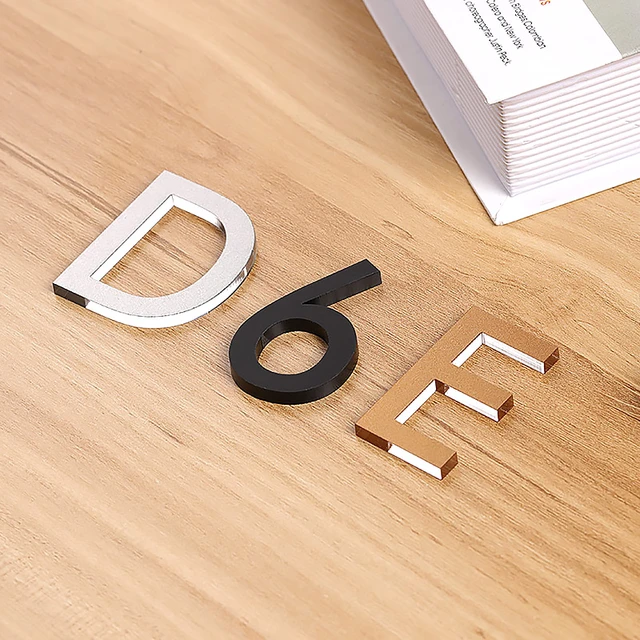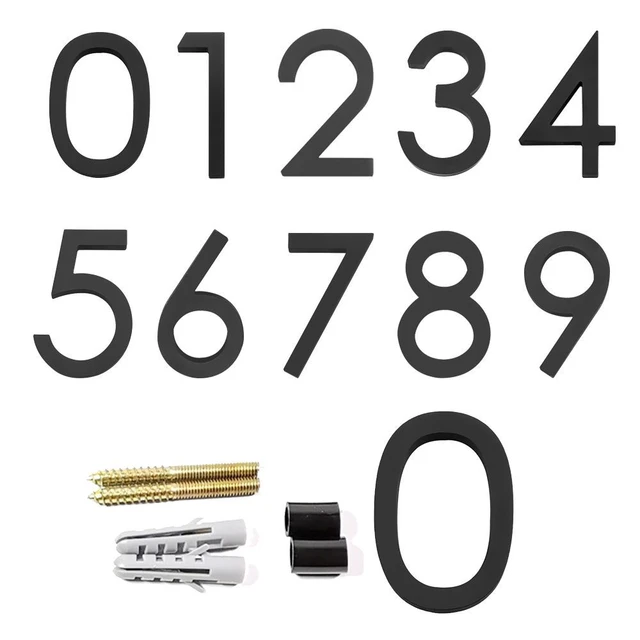 Introduction:
Introduction:
Decorative numbers for houses are a popular way to enhance the curb appeal of homes and add a touch of personalization. These numbers come in various designs, materials, and finishes, allowing homeowners to choose a style that complements their house’s aesthetic. In this comprehensive guide, we will explore the benefits of using decorative numbers, different types and materials available, installation methods, and tips for maintaining their appearance. By understanding the versatility and charm of decorative numbers for houses, individuals can elevate the visual appeal of their home and create a distinctive first impression.
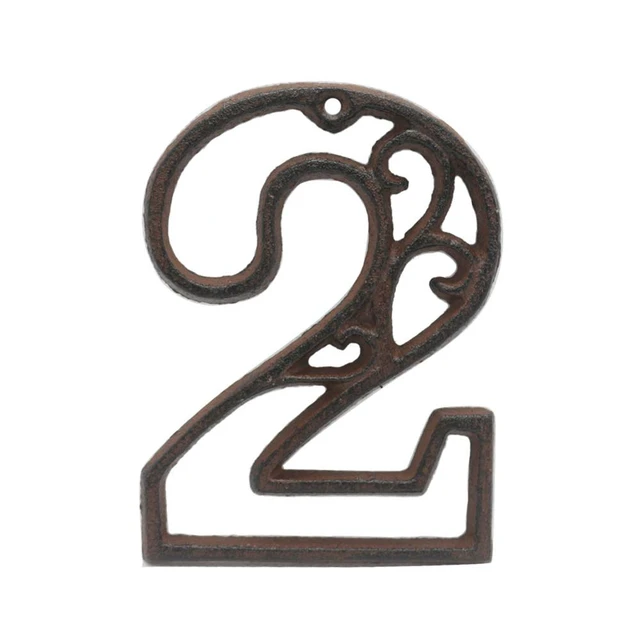 Common materials used for decorative house numbers:
Common materials used for decorative house numbers:
Decorative numbers for houses are available in a variety of materials, each offering different aesthetics, durability, and maintenance requirements. Here are common materials used for decorative house numbers:
Metal:
Metal is a popular choice for its durability and versatility. Materials like stainless steel, brass, bronze, or aluminum are commonly used. Metal numbers can have a sleek and modern look or a more traditional and elaborate design. They are typically weather-resistant and suitable for both indoor and outdoor use.
Wood:
Wooden decorative numbers provide a warm and natural appearance. Different types of wood, such as cedar, oak, or teak, are commonly used. Wood numbers can be stained or painted in various colors and finishes to match the desired style. They may require occasional maintenance, such as sealing or refinishing, to protect them from moisture and weather damage.
Ceramic or Porcelain:
Ceramic or porcelain decorative numbers offer a classic and refined look. They are often glazed for added protection and can come in various colors, finishes, and patterns. These numbers are typically suitable for indoor use or in areas with mild weather conditions.
Acrylic or PVC:
Acrylic and PVC are lightweight and durable materials commonly used for decorative numbers. They are available in a wide range of colors, styles, and finishes. Acrylic and PVC numbers are typically easy to clean and maintain and are suitable for both indoor and outdoor applications.
Stone or Concrete:
Decorative numbers made from stone or concrete provide a timeless and sophisticated appearance. Materials like granite, slate, or cast stone are commonly used for their durability. These numbers can withstand various weather conditions and require minimal maintenance.
Glass or Resin:
Glass or resin decorative numbers offer a sleek and modern look. They can be transparent or colored, with various textures and finishes. Glass or resin numbers are often used for a contemporary aesthetic and can withstand outdoor conditions with proper sealing and maintenance.
The choice of material for decorative numbers depends on personal preferences, the desired style, and the location of the numbers (indoor or outdoor). It’s important to consider the durability, weather resistance, and maintenance requirements when selecting the appropriate material for decorative house numbers.
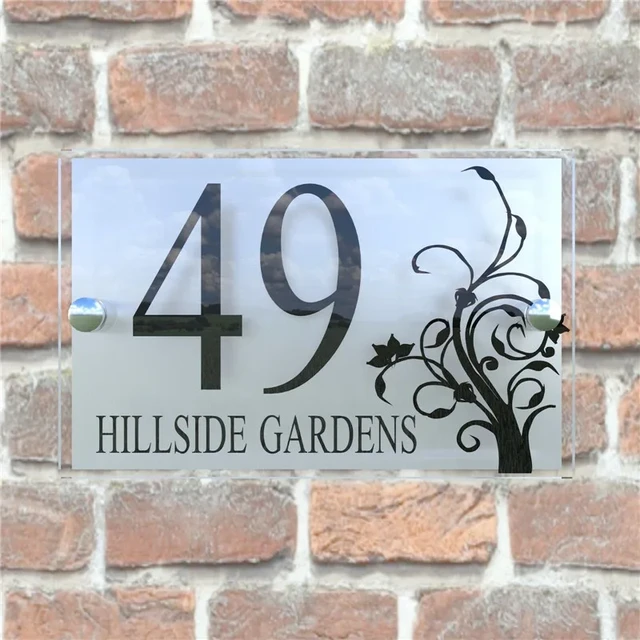 Benefits of Decorative Numbers for Houses
Benefits of Decorative Numbers for Houses
Improved Readability:
Decorative numbers are specifically designed to be easily read from a distance.
The clear and distinct styling ensures that visitors and emergency services can locate the house quickly.
Personalization and Individuality:
Decorative numbers allow homeowners to showcase their style and personality.
With various designs and finishes available, individuals can select numbers that reflect their unique taste.
Types and Materials of Decorative Numbers
Traditional Numbers:
Traditional numbers feature classic fonts and a straightforward design.
They are versatile and suitable for a range of architectural styles.
Modern Numbers:
Modern numbers have sleek and clean lines, often with bold or minimalist designs.
These numbers are ideal for contemporary homes and convey a sense of sophistication.
Decorative Shaped Numbers:
Decorative shaped numbers provide a fun and whimsical element to house exteriors.
They come in various creative designs, including animals, objects, or abstract shapes.
Materials:
Decorative numbers can be made from various materials, including metal, wood, ceramic, plastic, or stone.
Each material offers unique aesthetic qualities and durability.
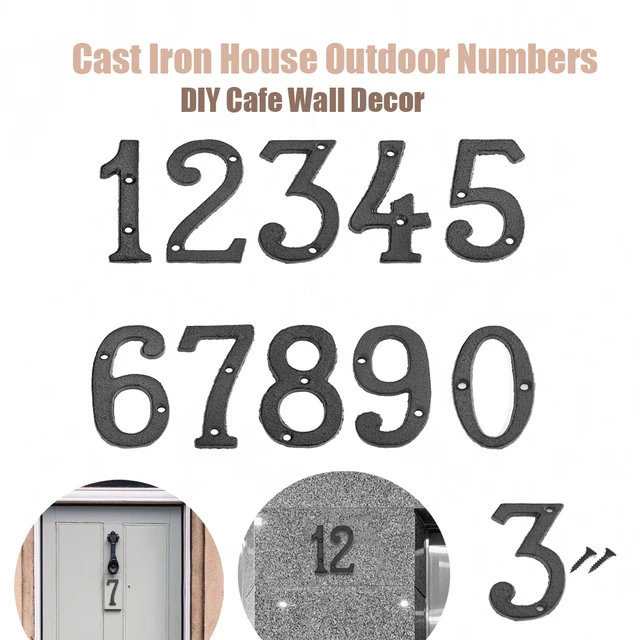 Installation Methods for Decorative Numbers
Installation Methods for Decorative Numbers
Wall-Mounted:
Wall-mounted installation involves attaching numbers directly to the exterior wall of the house.
This method is popular for houses with a flat, smooth surface.
Fence or Gate Mounting:
This method adds visual interest while allowing numbers to be easily visible.
Free-Standing:
This method is suitable for individuals who prefer not to attach the numbers directly to the house.
Maintaining Decorative Numbers
Cleaning:
Regular cleaning helps preserve the appearance and readability of decorative numbers.
Use a soft cloth or sponge with mild soap and water to remove dirt and grime.
Surface Protection:
Apply a clear protective coating suitable for the specific material of the numbers.
This helps protect against weathering, fading, and damage caused by the elements.
Inspection and Repair:
Regularly inspect decorative numbers for any signs of damage or loose mounting.
Repair or replace numbers promptly to maintain their functionality and aesthetics.
Disadvantages:
Cost: Decorative numbers tend to be more expensive than standard house numbers. The higher price is due to the additional design elements, materials, and craftsmanship involved. It’s important to consider your budget when selecting decorative numbers.
Maintenance: Some decorative numbers may require extra maintenance compared to standard numbers. Depending on the material and finish, they might need periodic cleaning, polishing, or weatherproofing to maintain their appearance and durability.
Visibility: While decorative numbers can add aesthetic value, some designs may compromise visibility. Intricate or elaborate designs might be more challenging to read from a distance, especially in poor lighting conditions. It’s essential to find a balance between style and practicality.
Limited Standardization: Decorative numbers might not always follow standard size and font regulations set by local authorities or postal services. This can occasionally pose challenges when it comes to meeting specific requirements or regulations for house number visibility and readability.
It is important to weigh the advantages and disadvantages based on personal preferences, budget, and practical considerations before choosing decorative numbers for house addresses. By considering these factors, homeowners can make informed decisions that enhance the overall appearance and functionality of their homes.
 Conclusion:
Conclusion:
Decorative numbers for houses offer a stylish and personalized way to enhance the exterior of homes. With a wide range of designs, materials, and installation options available, homeowners can find numbers that match their architectural style and reflect their individuality. Decorative numbers not only improve the readability of house addresses but also add a touch of charm and visual appeal to the overall appearance of a property. By selecting and maintaining the perfect decorative numbers, individuals can create a welcoming and distinctive ambiance that sets their home apart. Embrace the possibilities, express your style, and make a lasting impression with decorative numbers for your house.
